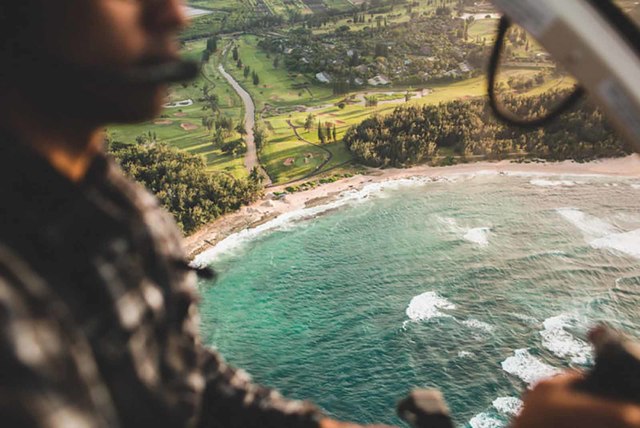General
Sea Exploration: An Insight To Hydrographic Surveying


Navigation through the seas has never been the most favorite pastimes of humans as they dreaded the waters and creatures that lie within. Voyaging attempts usually met a tragic conclusion as the primitive man did not have enough knowledge about the seas or how to develop the boats required for them. Gradually, the men developed expertise in boat building from stronger lumbers and other material, though navigation was still a big question mark.
Some of the earliest sources reveal that humans used sundials on sunny days to detect the position of North pole, and if it were cloudy, they would use sunstones to create enough artificial light. This fact might sound a bit familiar to the fans of RagnarLothbrok from the famous series Vikings, but these are only historical facts reproduced in popular culture. Today, as we speak, two big continents of the world remind us of an early voyager named Amerigo Vespucci. Yeah, you guessed it right, Americas means the Land of Amerigo, who discovered them.
For the safety of multi-million-dollar ships and the people onboard from meeting the fate of Titanic, scientists developed technologies to ensure safety. Improving on devices such as sextants, the scientists eventually built radio and satellite-based navigation. Afterward, humans got interested in the creatures of the sea and what lies beneath the ocean’s bed. Technologies such as SONAR worked brilliantly for detecting underwater objects and measuring the ocean’s depth. As humankind found oil beneath the ocean beds, they got ever so interested in drilling it out to meet our daily requirements. So, they found a way called hydrographic survey that studies everything underwater in a very detailed manner to make informed decisions. It is more useful to countries that have shores, and well, Australia is the biggest Island that exists with the ocean on all its sides. Company’s that specialized in this field, for instance, hydrographic survey Australia, conducts this survey to explore the sea by undertaking significant off-shore projects. Keep reading as we provide a synopsis about the hydrographic survey and its potential benefits
How Did It Begin?
First of all, the team establishes the surveying requirements, such as the area and location of the survey area. Afterward, they do a survey of the area under study. From financial feasibility to finding how the hydrographic survey will become easier depends immensely on this step. Aerial photographs of the whole area help the expert make the right decisions. For horizontal control, the team marks lines across the site, much like the latitude and longitude for help in location. Afterward, they employ the same method for the vertical control that helps in the next few steps, like finding the depth of the ocean. Any means of triangulation would help in this step, and they even leverage the GPS.
What Is Sounding?
Sounding is the process of measuring the depth of the water surface over the ocean bed. First, those conducting the survey find out control points along the shore to figure out the depth of the ocean. Stationary boats placed at each of these points determine the depth, and the team records the data. Afterward, they compare the data to the mean sea level for any accuracy errors because the depth of the sea varies at different points. Why is sounding so important? Well, if they are drilling a place, they must also perform dredging, which is removing any unwanted objects like mud, weeds, or rubbish. The information collected in the sounding process also helps in developing backwater and sea wells.
There are other methods for sounding, such as Lidar conducted from aircraft or drones. It works like a radar, but instead of radio waves emits light, that reflects from the ocean bed to help calculate the depth. Also, the satellite-aided methods include satellite-derived bathymetry and satellite altimetry. Bathymetry is the science of measurement of ocean depths, and altimetry is the science of measuring heights, in case you were wondering. This technique also relies on GPS, which is a system of 24 satellites helping in knowing our location; we use it in our phones too.
Who Conducts Hydrography?
International Hydrography Organization (IHO) provides the standards for the process, and every country’s government has such teams that help make ocean safe. Since governments only have control over a limited water body, someone must cover the territory beyond their jurisdiction. For that, private companies take over, and anyone who needs the necessary information outsources the process of the hydrographic survey to them.
What Are The Applications Of This Survey?
Hydrographic surveys help us understand our seas better to avoid future mishaps. Dredging and off-shore oil exploration today would not be possible without an extensive hydrographic survey. We also find out how the tides and sea current behave, find the depth of the oceans, locations of icebergs, and other vital data. What could be better for sea travel than finding out the calmest water route through such surveys? We can also figure the temporal changes in the seas, like the rise of sea levels due to global warming, by comparing our recent data to old data. Flood control, water power, sewage disposal, and irrigation are some of the lesser-known applications of hydrographic surveys.
Uses Of Hydrographic Survey
From finding out the depth of the ocean to calculating the mean sea level, a hydrographic survey has several uses that help us a great deal. We can prepare a navigation chart to help us sail smoothly. Furthermore, we can study the nature of ocean beds and the tides of the seas at various locations. It also helps us collecting the necessary data to build bridges, dams, oil drilling plants, or anything that has something to do with a water surface.
Conclusion
Sometimes we take the technological advancement for granted, but a few decades ago, we could not have imagined the world as we see it today. The way navigation techniques and study of the bodies of water have evolved over a period is fascinating. From leveraging sundials and sunstones to performing hydrographic surveys of the seabed, we indeed have come a long way. Not only are the governments involved, but private companies also step for regions outside the government’s jurisdiction. Even in hydrographic surveys, the technologies have evolved as it would be quite unwise not to make the whole process much more manageable.

 Model1 month ago
Model1 month agoTiffany Stratton: Biography, Wiki, Age, WWE Career, Net Worth, Before Fame, Boyfriend



 Technology2 months ago
Technology2 months agoHow to Send WooCommerce SMS Notifications for Orders





 Technology1 month ago
Technology1 month ago7 Essential TikTok Metrics to Track for Higher TikTok Views in 2025

 Technology1 month ago
Technology1 month agoWhy Airlines Are Using Virtual Reality Services for Pilot Training



 Technology1 month ago
Technology1 month agoTop 5 Tips for Using File Uploads in Your WooCommerce Store Efficiently



 General1 month ago
General1 month agoThe Hidden Costs of a DUI & How a Lawyer Can Help You Avoid Them





 Technology1 month ago
Technology1 month agoExploring TikTok AI: My Experience Making a Video With Only Artificial Intelligence

 Technology3 weeks ago
Technology3 weeks agoHow 3D Modeling Transforms AR Experiences for Online Furniture Stores?








You must be logged in to post a comment Login